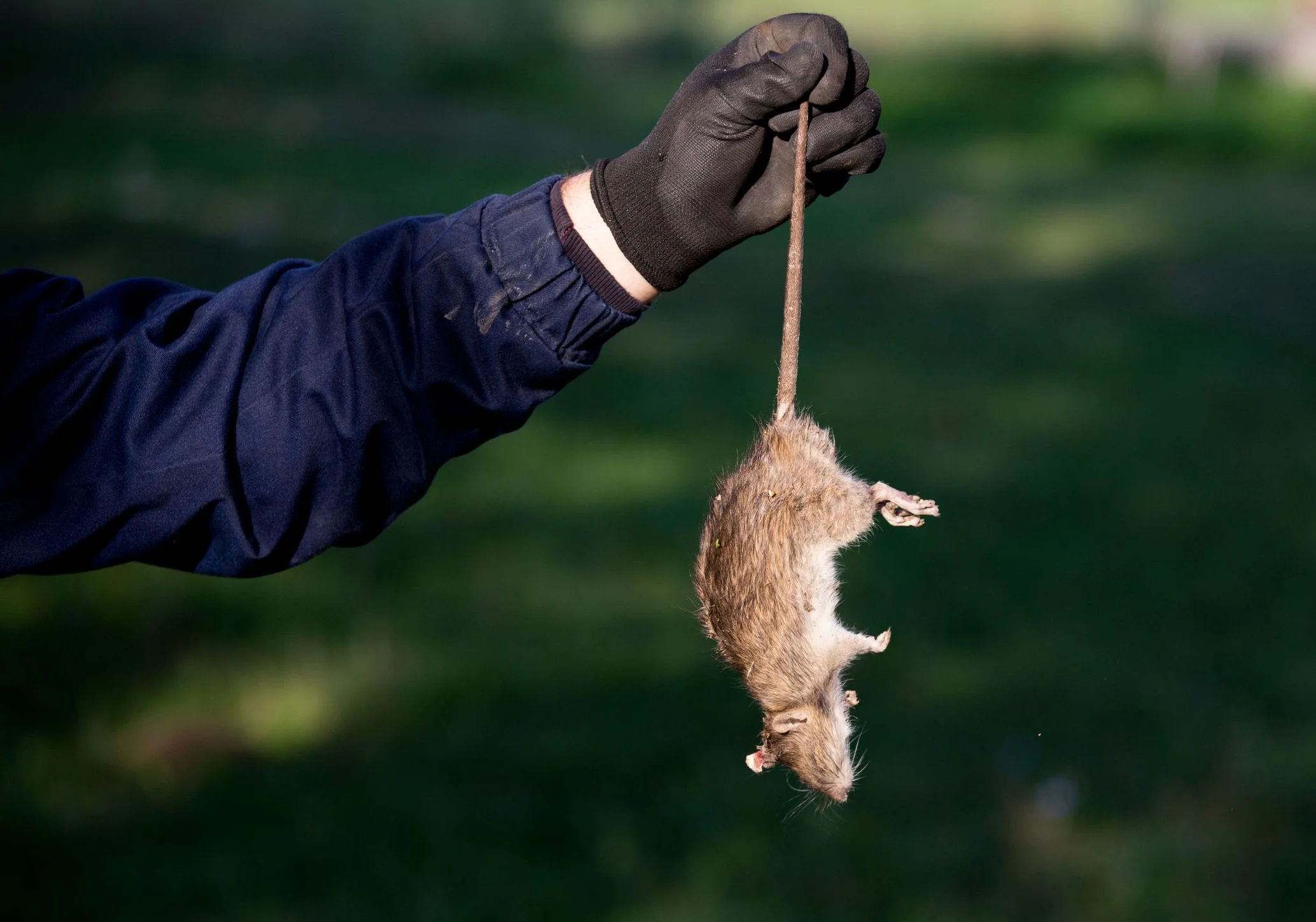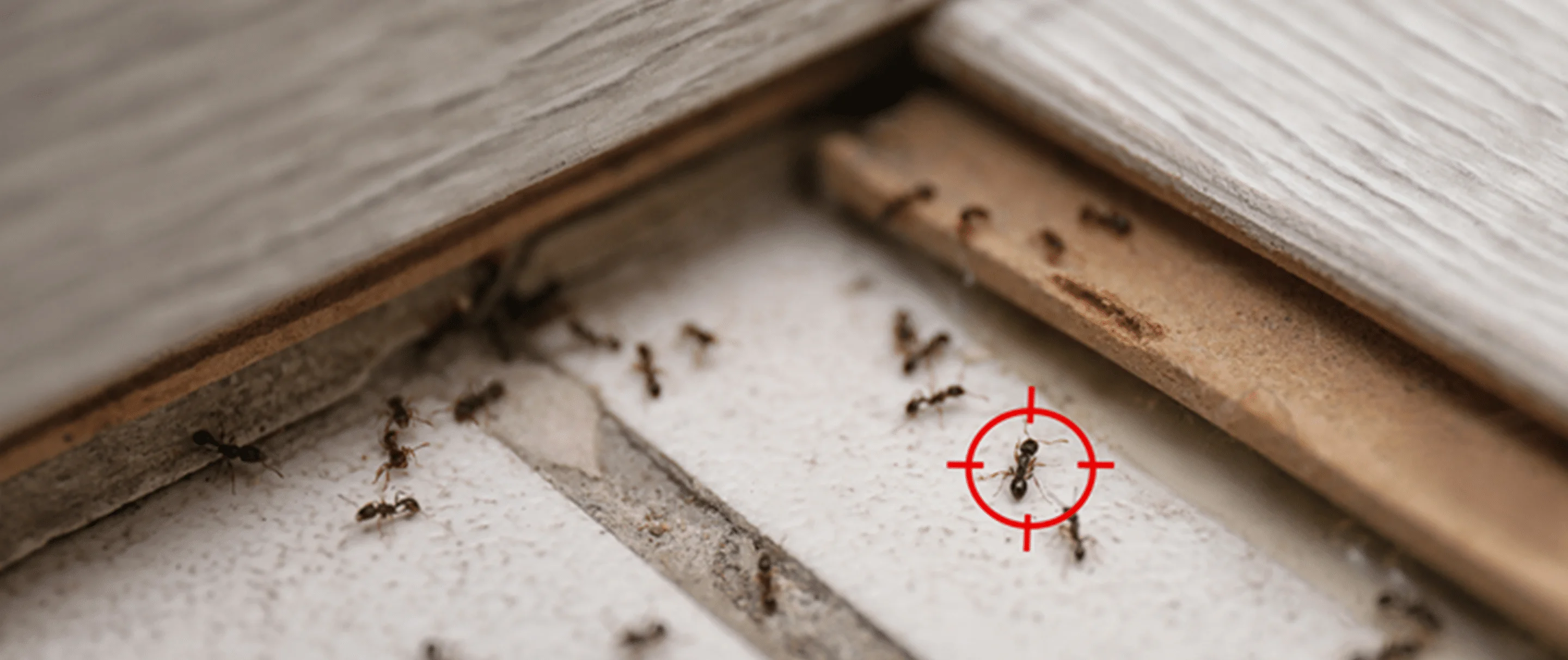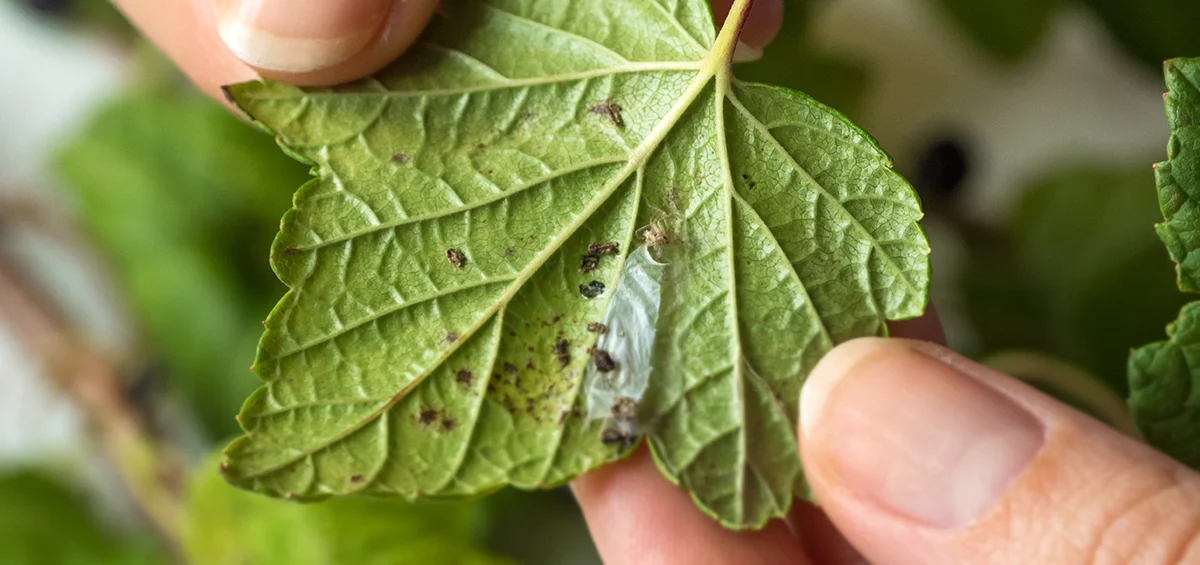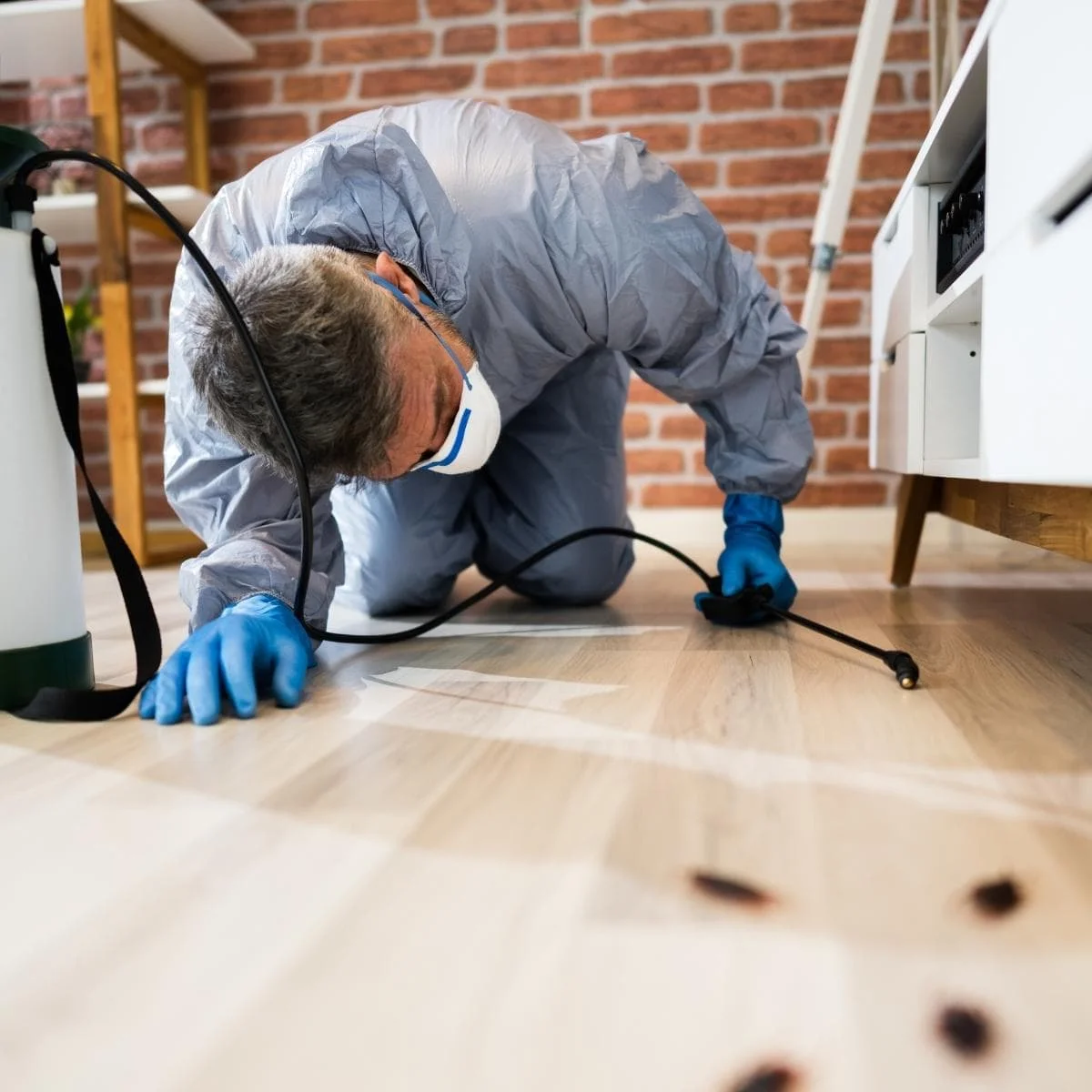From the Lake Champlain Valley to the Green Mountains and Connecticut River Valley, Vermont's diverse landscapes create unique pest management challenges. The state's northern climate with distinct seasons—harsh winters, muddy springs, brief summers, and spectacular fall foliage—dictates predictable pest activity cycles that require specialized knowledge to manage effectively. Professional pest control in Vermont means understanding how these seasonal patterns, combined with the state's agricultural heritage, rural character, and diverse ecosystems influence pest behaviors throughout the year.
Homeowners and businesses across Vermont face recurring challenges from pest infestations that can damage property, affect health, and disrupt daily activities. That's why many residents rely on professional exterminators who understand the region's specific challenges. Local experts recognize that both preventive approaches and targeted treatments are essential to maintaining pest-free properties in Vermont's seasonal climate. In this guide, we'll explore common Vermont pest problems, effective management strategies including eco-friendly pest solutions, and why partnering with local professionals offers the most reliable protection for your home or business.
Facing a pest problem? Our Vermont team provides
emergency pest control
24/7 and comprehensive
pest inspections to protect your property.
Contact us for prompt, reliable service!
Pest Control Challenges Specific to Vermont
Vermont's distinct environment creates unique pest control challenges that require specialized knowledge and approaches. Here's why pest control in Vermont demands tailored solutions:
-
Extreme seasonal shifts Vermont experiences dramatic seasonal changes that drive predictable but intense pest cycles. Winter temperatures regularly plummet below zero, forcing rodents and overwintering insects to seek shelter in structures. Spring thaws bring moisture-loving pests as snowmelt creates damp conditions. Summer's brief intensity compresses breeding seasons for mosquitoes, ticks, and stinging insects. Fall triggers mass invasions of overwintering pests preparing for winter survival. These distinct seasonal pressures require targeted timing of preventive treatments and different management approaches throughout the year.
-
Historic architecture Vermont's cherished architectural heritage, from colonial-era homes to historic barns and classic New England properties, creates specific pest vulnerabilities. Older construction methods, settlement over time, and preservation requirements often complicate pest exclusion and treatment. Post-and-beam frames, fieldstone foundations, slate roofs, and other historic elements commonly provide harborage for rodents, bats, and insects that would be excluded in modern construction. Effective pest management must protect these structures while respecting their historical significance and construction limitations.
-
Rural-wilderness interface Many Vermont properties exist where developed areas meet forests, agricultural land, or other natural habitats. This creates constant pressure from native pests that readily move between natural environments and human structures. Homes and businesses in rural areas, near state forests, or adjacent to agricultural operations face different challenges than properties in more developed communities like Burlington or Rutland. Wildlife pests, ticks, and agricultural-associated insects regularly impact these interface properties, requiring comprehensive management approaches.
-
Moisture management Vermont's climate includes significant annual precipitation and snowmelt, creating chronic moisture challenges that support pest populations. Basement and crawlspace moisture issues are common in many Vermont homes, particularly in spring and after heavy summer rains. These damp environments attract and support various moisture-dependent pests including carpenter ants, springtails, millipedes, and wood-destroying fungi that facilitate structural pest damage. Effective pest management must address these moisture conditions alongside direct pest control measures.
-
Seasonal properties Vermont's tourism and recreation industry includes numerous seasonal properties—ski cabins, summer cottages, lakefront homes, and hunting camps—that face unique pest management challenges. Periods of vacancy allow pests to establish undetected, while seasonal reoccupation often reveals infestations requiring immediate attention. These properties require specialized management approaches that provide protection during absent periods and safe reoccupation when owners return.
These factors make informed, season-appropriate pest prevention particularly important for Vermont property owners. Professional pest management companies familiar with these regional challenges can develop customized strategies that address Vermont's specific seasonal and environmental factors while protecting your property throughout the year.
Common Pests in Vermont
Vermont's climate and diverse landscapes support a variety of persistent pests. Here are the most common invaders that Vermont homes and businesses encounter:
Mice and Rodents
Mouse exclusion work in a Burlington home
Rodents represent one of the most significant pest challenges in Vermont, particularly during the state's long, cold winters. House mice are the most common home invaders, while deer mice frequently infiltrate seasonal properties, outbuildings, and homes in rural areas. Norway rats can be problematic in urban areas like Burlington and Rutland and around agricultural operations. These persistent invaders not only damage property through gnawing and nest building but also pose health risks through droppings, urine, and potential disease transmission.
Effective rodent control in Vermont requires a comprehensive approach that adapts to seasonal pressures. Professional management typically combines thorough exclusion work to seal entry points (particularly important before winter), strategic placement of monitoring and control devices, removal of attractants, and ongoing maintenance to prevent reinfestation. For many Vermont homes, addressing rodent vulnerabilities in fall is essential preparation for winter, when increased pressure makes prevention more difficult.
Carpenter Ants
Carpenter ant inspection in Montpelier
Vermont's forested landscapes and moisture patterns create ideal conditions for carpenter ants, which rank among the state's most destructive wood-damaging pests. Unlike termites, carpenter ants don't consume wood but excavate moist or decaying wood to create nesting galleries, potentially causing significant structural damage over time. In Vermont's older homes, log cabins, and structures near forested areas, carpenter ant infestations can develop and expand for years before detection.
Professional carpenter ant management begins with thorough inspection to locate parent and satellite colonies, which may be inside walls, under insulation, or in nearby landscape features. Treatment typically combines direct application to identified nests, targeted perimeter protection, baiting programs, and—crucially for Vermont properties—recommendations to address moisture issues that attract and support colonies. For homes with recurring carpenter ant problems, seasonal prevention in spring, when colonies become active after winter dormancy, provides the most effective long-term protection.
Ticks
Tick treatment application in Stowe
Vermont consistently ranks among states with high Lyme disease incidence, making ticks a significant health concern throughout the state. Blacklegged ticks (deer ticks), American dog ticks, and increasingly, lone star ticks threaten both residents and visitors, particularly in wooded areas, along trail edges, and in tall grass habitats. Beyond Lyme disease, these parasitic pests can transmit anaplasmosis, babesiosis, and other serious tick-borne diseases.
Professional tick management focuses on protecting high-use outdoor areas around homes and businesses through targeted treatment of vegetation where ticks quest for hosts. Effective programs typically combine habitat modification recommendations (maintaining landscaped barriers between wooded areas and lawns, keeping grass short, removing leaf litter) with carefully timed applications during peak activity seasons. For many Vermont properties, especially those near wooded areas or with high deer activity, scheduled treatments throughout the warm season (April through October) provide the most reliable protection against these dangerous pests.
Cluster Flies and Overwintering Pests
Vermont's distinct seasonal cycles trigger predictable invasions of various overwintering pests seeking shelter before cold weather arrives. Cluster flies, western conifer seed bugs, boxelder bugs, and multicolored Asian lady beetles commonly enter homes and buildings in fall, hiding in wall voids, attics, and other protected spaces until warm days trigger activity, often resulting in sudden indoor appearances during winter and early spring.
Effective management of these seasonal invaders requires preventive treatments before they enter structures. Professional applications to exterior walls, eaves, and potential entry points in late summer and early fall create barriers that significantly reduce invasion numbers. For properties with recurring problems, comprehensive exclusion work to seal potential entry areas provides additional protection when combined with timely preventive treatments. Once these pests have entered wall voids and attic spaces, control becomes more challenging, making preventive approaches the most effective strategy for Vermont homes.
Bats and Wildlife
Vermont's rural character and abundant natural areas create significant wildlife pest pressures on many properties. Bats frequently establish colonies in attics, barns, and outbuildings, creating noise, odor, and health concerns through guano accumulation. Squirrels, raccoons, porcupines, and other wildlife regularly attempt to access structures, particularly in rural areas and properties near forests or agricultural land.
Professional management of wildlife pests requires specialized knowledge and often includes both exclusion work to prevent entry and removal of animals already present in structures. For bats, which are protected in Vermont, management must follow specific regulations regarding removal timing and methods. Effective wildlife control typically includes thorough inspection to identify entry points, installation of appropriate exclusion materials, removal of existing pests when necessary, and ongoing maintenance to prevent return. For many Vermont properties, seasonal timing of wildlife management is critical, particularly for bats, which cannot be excluded during maternity periods under state regulations.
Eco-Friendly Pest Control Approaches
Vermont's strong environmental ethos and commitment to natural resource protection have increased demand for eco-friendly pest solutions that effectively address pest problems while minimizing environmental impact. Modern integrated pest management (IPM) approaches provide effective control with reduced reliance on chemical treatments. This comprehensive strategy combines inspection, monitoring, habitat modification, exclusion, biological controls, and targeted applications of reduced-risk products only when necessary.
Many Vermont pest control providers now offer green service options that prioritize environmental protection while effectively managing pests. These programs often utilize botanical insecticides derived from plant oils, mechanical controls like traps and exclusion features, and targeted applications that minimize impact on non-target organisms. For properties near sensitive areas like lakes, streams, or organic farms, these eco-friendly approaches help maintain effective pest control while protecting Vermont's precious natural resources and agricultural heritage.
Vermont Watershed Protection
Our Vermont pest specialists are trained in watershed-friendly practices that protect the state's lakes, rivers, and groundwater while still providing effective pest management for your property.
Below is a comparison of different eco-friendly pest management approaches commonly used in Vermont:
| Approach |
Benefits |
Best Applications |
| Exclusion Methods |
Physically prevents pest entry; provides long-term protection without chemicals; eliminates need for repeated treatments.
|
Rodent-proofing before winter, sealing entry points for overwintering pests in fall, bat exclusion in appropriate seasons.
|
| Habitat Modification |
Reduces conditions that attract pests; provides sustainable long-term solutions; decreases need for product applications.
|
Creating tick buffer zones around properties, managing moisture to reduce carpenter ant attraction, reducing harborage for rodents.
|
| Mechanical Controls |
Directly removes pests without chemicals; immediate results; precisely targeted to problem areas.
|
Trapping for mice and other rodents, physical removal of wasp nests, vacuum removal of cluster flies in living spaces.
|
| Botanical Treatments |
Derived from plant compounds; typically lower toxicity; break down rapidly in the environment.
|
Perimeter treatments using plant-based repellents, tick control in yards with children and pets, seasonal treatments for overwintering pests.
|
| Reduced-Risk Baiting |
Minimal product use; targets specific pest colonies; limited environmental exposure through contained delivery.
|
Carpenter ant control using targeted baits, rodent management with secured bait stations, yellow jacket control near outdoor living areas.
|
In Vermont's diverse environments—from lakeside properties to mountain villages to rural farmsteads—these eco-friendly approaches can be tailored to address specific pest challenges while protecting the state's natural resources. Professional pest management companies typically begin with a comprehensive inspection to identify the most environmentally appropriate solutions for each unique situation.
Residential vs Commercial Pest Control
Residential Pest Protection
Vermont homes face diverse pest challenges based on their location, architecture, and surrounding environment. Residential pest protection programs typically focus on creating defensive barriers while ensuring treatments are safe for families, pets, and the environment. Many Vermont homeowners opt for quarterly service plans that adapt to seasonal pest cycles, with additional attention during high-pressure periods like spring carpenter ant emergence, summer tick season, or fall rodent and overwintering pest invasions.
From historic Burlington and Montpelier homes to rural farmhouses in the Northeast Kingdom to ski properties in Stowe or Warren, residential service begins with a comprehensive inspection that identifies current pest issues, potential vulnerabilities, and conditions that might attract pests. Treatment plans are then customized for each property, taking into account specific construction features, surrounding habitat, and seasonal pest pressures. For seasonal properties around Lake Champlain or in ski areas, specialized programs address the unique challenges of periodic occupancy and wilderness proximity.
Commercial Pest Control
Vermont businesses require specialized pest management that addresses industry-specific needs while meeting regulatory requirements. Commercial pest control programs are designed to protect reputation, prevent product contamination, and ensure compliance with health codes and industry standards. From Burlington's restaurants to Manchester's retail outlets to Waterbury's food production facilities, each business type faces distinct pest management challenges requiring tailored approaches.
Commercial service typically involves more comprehensive documentation, including detailed service reports, monitoring device placement maps, and trend analysis to identify and address emerging issues before they become problems. Many Vermont businesses implement Integrated Pest Management programs that emphasize prevention through improved sanitation, exclusion, and structural modifications, with targeted treatments only when necessary. Vermont's vibrant tourism industry, craft food and beverage producers, and agricultural businesses require particularly vigilant pest management to maintain quality standards, protect customer experiences, and ensure regulatory compliance.
From residential pest protection plans to customized
commercial pest control solutions, we provide expert services throughout Vermont –
contact us today to protect your property!
Why Choose Local Vermont Pest Control Experts?
Working with pest control professionals who understand Vermont's unique challenges offers significant advantages. Here's why partnering with local experts provides better results for your home or business:
-
Seasonal timing expertise Vermont's dramatic seasonal shifts create distinct pest activity cycles that local professionals understand intimately. They know precisely when carpenter ants typically emerge in spring, when tick activity peaks in different regions, and when to implement preventive treatments before fall invasions of overwintering pests. This seasonal knowledge allows for more strategic timing of services, providing better results than standardized approaches that don't account for Vermont's specific seasonal patterns.
-
Historic property experience Vermont's treasured architectural heritage—from colonial village centers to classic farm structures—requires specialized pest management approaches. Local experts understand how to effectively protect these historic buildings while respecting their unique construction characteristics, preservation requirements, and common vulnerability points. This specialized knowledge is particularly valuable for properties in historic districts or structures with traditional building features.
-
Rural pest knowledge Vermont's predominately rural character creates pest challenges not commonly encountered in more urbanized states. Local professionals understand the complex dynamics of agricultural pests, wildlife interactions, and the rural-wilderness interface. They can identify species-specific behaviors of regional pests and implement appropriate management strategies tailored to rural Vermont properties.
-
Regulatory compliance Local experts stay current with Vermont's specific environmental regulations, wildlife protection laws, and treatment requirements. This regulatory knowledge is particularly important for managing protected species like bats, applying treatments near water bodies, or working in areas with specific local ordinances regarding pest management approaches.
-
Winter weather adaptation Vermont's harsh winter conditions require specialized approaches to both pest prevention and treatment implementation. Local professionals understand how to maintain effective protection during freezing conditions, adapt service schedules to weather realities, and address the unique challenges of winter pest problems like rodent infestations and occasional indoor insect activity. This winter expertise is essential for year-round protection in Vermont's northern climate.
By choosing local professional exterminators who understand Vermont's unique conditions, you get more effective, responsive service tailored to your specific pest challenges and property needs—all from providers who live in and understand the communities they serve. This local expertise makes a significant difference in both the effectiveness and sustainability of pest management results throughout Vermont's diverse regions.
Don't let pests threaten your Vermont property. Our local experts deliver effective pest control in Vermont with customized solutions –
schedule your inspection today!
Top Cities for Pest Control in Vermont
Different regions across Vermont face varying pest challenges based on their geography, development patterns, and local environments. Here are some key Vermont communities and the unique pest management challenges they face:
Burlington
As Vermont's largest city, Burlington faces both urban pest challenges and issues related to its Lake Champlain waterfront. The city's historic neighborhoods like the Hill Section and Old North End feature older homes with established pest pressures, while newer developments face different challenges. Urban rodents, particularly mice and occasionally rats, are common in downtown areas and near restaurants. Lake-influenced moisture supports carpenter ant populations, especially in properties near the waterfront. The city's vibrant food scene creates specific challenges for restaurants and food service businesses, while the university area experiences seasonal fluctuations in pest pressures as student populations shift. Burlington's mix of historic architecture and modern construction requires varied pest management approaches tailored to each property's specific characteristics.
Stowe
Stowe's position as a premier mountain resort community creates distinctive pest management challenges influenced by elevation, seasonal occupancy patterns, and wilderness proximity. The area's luxury vacation properties and ski lodges often experience rodent invasions during vacant periods, requiring specialized seasonal protection plans. Forested surroundings create significant pressure from carpenter ants, while outdoor recreation areas face heightened tick activity requiring comprehensive management to protect guests. The town's historic village district features traditional New England architecture requiring preservation-sensitive pest control approaches, while mountain properties at higher elevations experience different pest timing and pressures than valley locations. The combination of tourism-focused businesses and seasonal residential properties makes Stowe a microcosm of Vermont's diverse pest management needs.
Seasonal Pest Guide for Vermont
Spring (March-May)
- Carpenter ants become active
- Tick activity begins as snow melts
- Cluster flies emerge from wall voids
Recommendation: Schedule carpenter ant inspection and implement tick prevention around your property.
Summer (June-August)
- Tick populations reach peak activity
- Wasps and hornets build nests
- Mosquitoes thrive after summer rains
Recommendation: Maintain tick treatments and monitor for stinging insect nests around structures.
Fall (September-November)
- Mice and other rodents seek winter shelter
- Cluster flies and overwintering pests invade
- Last-season wasp nests become aggressive
Recommendation: Seal entry points and apply preventive treatments before cold weather drives pests indoors.
Winter (December-February)
- Rodent activity intensifies indoors
- Overwintering pests appear on warm days
- Stored product pests emerge in pantries
Recommendation: Focus on indoor pest management and maintain rodent control systems.
What Our Vermont Clients Say
"When we discovered carpenter ants in our historic Burlington home, we were terrified about potential damage to our original woodwork. Their thorough inspection identified the parent colony in our yard and satellite nests in our walls. Their targeted treatment eliminated the problem while preserving our home's historic features. Two years later, we remain ant-free thanks to their seasonal maintenance visits."
- Sarah M., Burlington
★★★★★
"Our Stowe vacation property had a persistent mouse problem every winter when it sat vacant between guest bookings. Their comprehensive exclusion work and strategic placement of monitoring stations have completely solved the issue. Now we never worry about unpleasant surprises when opening the house for ski season or summer visitors."
- Michael T., Stowe
★★★★★
"As a restaurant owner in Montpelier, maintaining a pest-free environment is crucial for our reputation. Their commercial service has been outstanding, keeping our establishment protected while using eco-friendly methods that align with our farm-to-table philosophy. The detailed documentation they provide has made health inspections a breeze."
- David L., Montpelier
★★★★★
Frequently Asked Questions
How often should Vermont homeowners schedule pest control services?
Most Vermont homes benefit from quarterly pest control service to address our state's distinct seasonal pest cycles. This typically includes spring treatments focusing on carpenter ants and emerging pests, summer protection targeting ticks and stinging insects, fall prevention for rodents and overwintering pests, and winter maintenance to address indoor activity. However, specific circumstances might require customized schedules—rural properties often face different pressures than urban homes, vacation properties might need services timed around occupancy patterns, and homes with specific issues like carpenter ants might benefit from additional targeted treatments during peak activity seasons. During your initial inspection, our technicians will recommend an optimal service schedule based on your property's location, construction features, surrounding environment, and specific pest history.
How do you handle carpenter ant problems in older Vermont homes?
Carpenter ant management in Vermont's historic and older homes requires a specialized approach that addresses both the infestation and the unique characteristics of these cherished structures. Our process begins with a comprehensive inspection that goes beyond visible areas to identify both parent and satellite colonies. We use moisture meters, thermal imaging when appropriate, and detailed visual inspection of areas particularly vulnerable in older construction—post and beam connections, rim joists, areas near stone foundations, and weathered exterior trim. Once colony locations are identified, we implement a multi-faceted treatment strategy: direct treatment of identified nests using appropriate formulations, targeted void injections in wall spaces where ants are traveling, perimeter protection to intercept foraging workers, and when appropriate, baiting systems that allow workers to carry material back to colonies in inaccessible areas. Equally important, we provide detailed recommendations to address moisture issues that attract carpenter ants, which often requires working with preservation-minded approaches suitable for historic structures—improving drainage while respecting original foundations, addressing wood-to-soil contact in ways compatible with historic character, and recommending appropriate repairs for water-damaged wood components. For Vermont's older homes, we typically recommend seasonal monitoring during spring and early summer when carpenter ants are most active, allowing us to catch new activity before significant damage occurs. This preservation-sensitive approach effectively protects Vermont's architectural heritage from carpenter ant damage while respecting the unique characteristics and historical significance of these beloved structures.
What's the best approach to tick control for Vermont properties?
Effective tick management for Vermont properties requires a comprehensive approach that combines habitat modification, targeted treatments, and ongoing monitoring. We recommend a multi-layered strategy beginning with property assessment to identify high-risk areas where ticks are likely to thrive—woodland edges, ornamental plantings, stone walls, leaf litter accumulation zones, and areas frequented by wildlife. Based on this assessment, we create a customized management plan that typically includes: creating buffer zones between wooded areas and lawns or recreational spaces; targeted applications to vegetation where ticks quest for hosts, focusing on transition zones between woods and maintained areas; and recommendations for landscape modifications that reduce tick habitat, such as clearing leaf litter, keeping grass shorter in high-use areas, and creating barriers with materials like wood chips or gravel between wooded edges and lawns. For properties with children, pets, or frequent outdoor activities, we often recommend a schedule of 3-4 treatments during the active season (typically May through October in Vermont), with timing adjusted based on seasonal conditions and specific tick species prevalent in your area. Each treatment is carefully applied to minimize environmental impact while maximizing protection in areas where human-tick encounters are most likely. We complement these professional services with education about personal protection measures and routine tick checks to provide comprehensive protection against Vermont's significant tick populations and the diseases they transmit.






